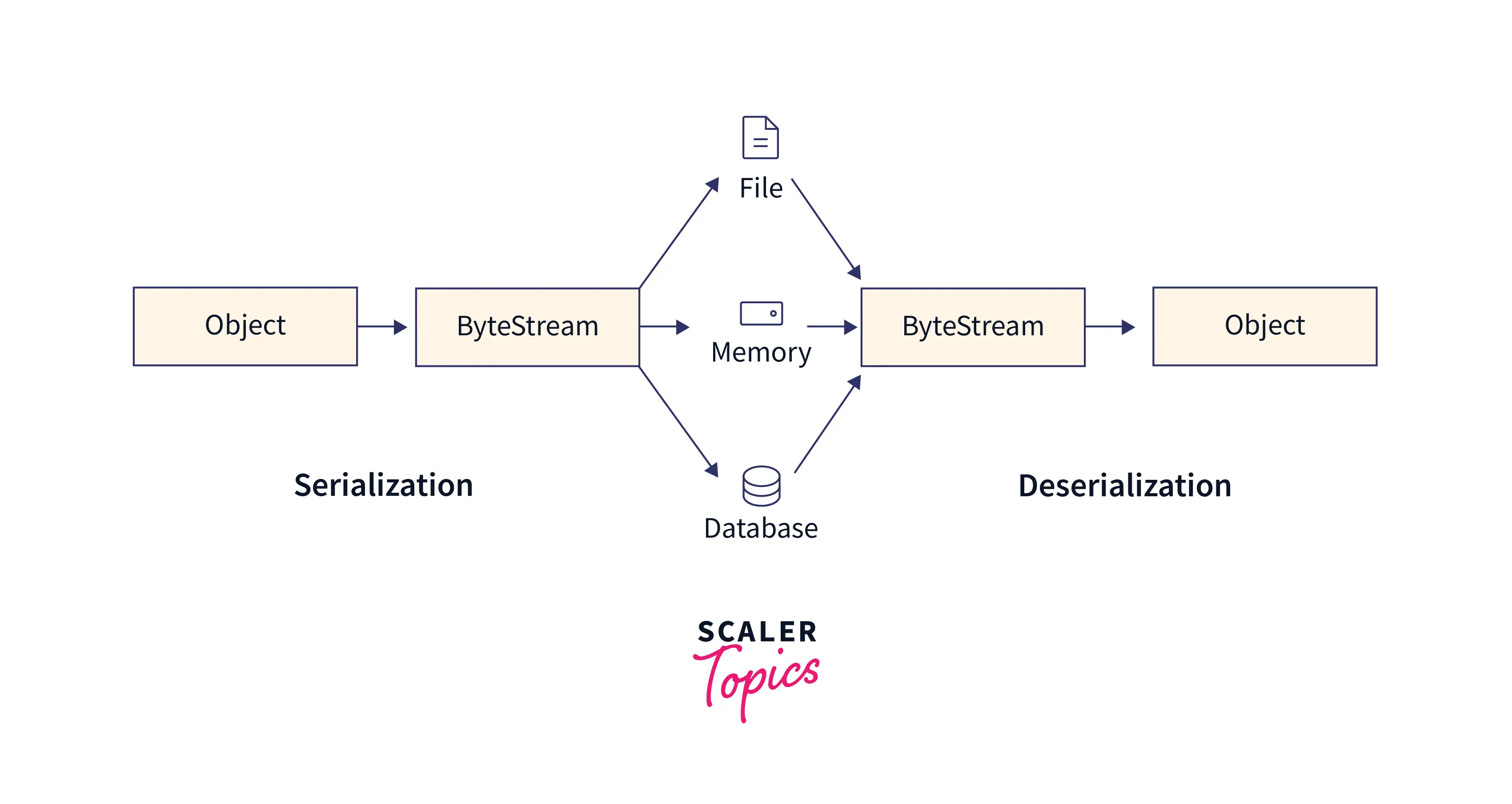Deserialization in Django
Overview
The procedure of extraction of the object to convert it into model class objects is called deserialization. Deserializers in Django work similarly to the Django serialization and it enables the conversion of the parsed data back into complex types after the incoming data validation. Serialization and deserialization of data are very similar to each other in Django.
Introduction to Deserializers
- Providing a way for model instances to serialize into representations is the first and foremost requirement of the API. The procedure of making a streamable representation of the data so that it can be transferred over the network is called serialization.
- The reverse of serialization is deserialization.
- The procedure of extraction of the object to convert it into model class objects is called deserialization.
- Deserializers in Django work as Serializers and it enables the conversion of the parsed data back into complex types after the incoming data validation.
Deserializing Data
Serialization and deserialization of data are very similar to each other.
Refer below image for a better understanding of deserialization and serialize

Below is the code for deserializing the object by using deserialize provided by the Django
Just like serialize function format argument i.e. stream or string of data taken as an argument by the deserialize function in Django. the iterator is returned by deserialize function in Django. Deserialized iterator is not a Regular Django object. In place of that, these are special DeserializedObject instances that do the wrapping of the created and unsaved object and any data associated with that specific relationship. DeserializedObject.save() is called for saving the object into the database. Deserializing is a type of non-destructive operation in cases serialized representation does not match the data currently available in the database. If in the serialized data there is no pk attribute or if the pk attribute is null, then in the database new instance will be saved.
If the serialized data fields are not existing in the model, then the error named DeserializationError is raised until we have not passed true for the argument ignorenonexistent.
Deserialization of Natural Keys
The most convenient way for referring to an object is not always an integer id, In some cases, we require a more helpful reference. For these natural keys are provided by Django. A natural key is referred to as the values tuple and is used for unique identification of the instance of the object without the help of the primary key value. Let us make two models with the name employee and manager. A model employee is created with three fields i.e. firstName, lastName, dob and the fields in the Employee model are name, empManager, and in this model empManager field is made foreign key. And in the Managers model, we are using firstName and lastName fields for the unique identification of the model.
Generally, an integer value is used by the Employee model serialized data for referring to the empManager field. For instance, Employee is serialized in the JSON format in the following way:
But referring to the empManager in this way is not a natural way. It looks good if you know the value of the primary key of the empManager. And apart from that the value of the primary key is required to be predictable and stable. If in the Managers model, natural key handling will be added this can be achieved. Default Manager with the get_by_natural_key() method can be defined for the Managers model to add natural key handling.
Now the natural key is used by the Employee for referring Managers objects
You need to choose the field for the natural key in such a manner that it should uniquely identify an object. There must be a unique clause in your model for the available fields or multiple fields in the natural key. Single fields having unique=true, and multiple fields having unique_together are unique clauses that can be used for natural keys. It is not necessary to apply uniqueness at the database level. If there is a certainty that some fields of the model will be effectively unique then those fields can be considered as the natural key. If the deserialization of objects having no primary key takes place then it checks the presence of get_by_natural_key() in the model manager. If it is available then it will be used to populate the primary key of deserialized objects.
Conclusion
- The procedure of saving the object state, for use in the future for its sharing to the remote location across the network is called serialization.
- And the procedure of extraction of the object to its original position back is called deserialization.
- Serializers also work as Deserializers in Django and it enables the conversion of the parsed data back into complex types after the incoming data validation.
- Format argument i.e. stream or string of data taken as an argument by the Deserializers in Django is similar to the serializer and the iterator is returned by it.
